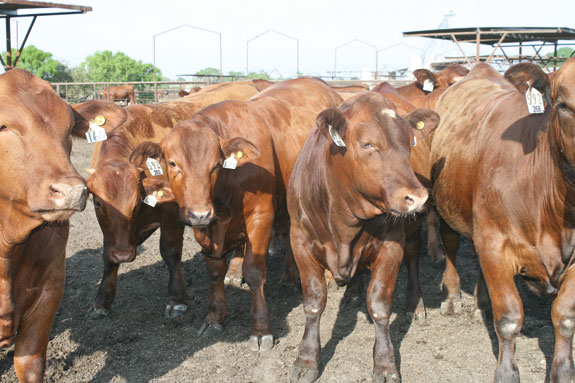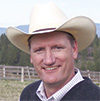The thinking behind this management approach is: Instead of using growth implants, why not take advantage of the natural hormones produced and the subsequent increase in growth rate when bull calves are left intact?
Any change in management brings with it advantages and disadvantages. Let’s take a look at the effects of using delayed castration.
Does delayed castration really increase growth rate?
According to numerous research studies, bull calves can gain between 5 to 15 percent more than steers.
However, everyone knows that feeder calf buyers do not want to buy a bunch of bull calves. So these bull calves will have to be castrated prior to being sold or there will be price deductions.
Research conducted at Kansas State University by Marston et. al., in 2003, showed that bull calves castrated early, at 90 days old or less, and not implanted with a growth hormone, weighed less at weaning time compared to bull calves castrated at weaning (approximately 226 days old).
However, the rate of gain for the first 28 days post-weaning was 1.52 pounds per day for the early-castrated calves compared to 1.16 pounds per day for the calves castrated at weaning.
So the weight gain increase from leaving the calves intact until weaning was wiped out during the first month post-weaning due to stress. The early-castrated calves caught up with the calves castrated at weaning and the weight advantage disappeared.
In addition, the older the calf is when it is castrated, the greater the effect on weight loss or gain, health and carcass quality. This is especially true if the bull calf has reached puberty prior to being castrated.

Late castration and carcass quality?
To evaluate the effect of castration’s timing on carcass quality, you must define late castration. Most of the research studies characterize early castration as follows:
- Early – when calves are 3 months old or less or under 250 pounds
- Weaning – when calves are 6 to 7 months old and approximately 500 to 600 pounds
- Late – when calves reach puberty at 8 to 10 months old and weigh over 800 pounds.
Therefore, if you analyze the differences between bull calves that are castrated early, at weaning and late, there are definite differences in meat quality.
Several research studies have shown that marbling scores and meat tenderness are lower as the age and weight of the bull calf at castration increases.
At Utah State University, Heaton et. al., in 2004 conducted research on the effects of delayed castration on British crossbred beef calves in regards to weight gain, carcass quality and consumer acceptability.
In this study, bull calves were castrated early weighing 233 pounds, at weaning weighing 535 pounds and late weighing 803 pounds.
Carcass traits for the three treatment groups showed there were no differences in average daily gain, backfat, ending live weight, hot carcass weight or dressing percentage.
There were differences in ribeye area and cutability, with the late-castrated calves having larger ribeyes and higher cutability. Marbling scores and yield grades were lower for the late-castrated calves.
So again, the research does point to a reduction in marbling ability in late-cut calves, which will mean lower-quality grades.
How about meat tenderness and eating satisfaction?
The Utah State study used taste panels to determine eating quality of the beef from the three treatment groups.
They used two panels: a group of people ranging in age from 30 to 40 years old that regularly ate beef and a group of people ranging in age from 20 to 30 years old that ate beef less than once a month.
The first taste panel found the beef from early-castrated calves more tender, juicy and flavorful than the beef from the calves cut at weaning and/or late.
The overall acceptability was also significantly higher from the early-castrated beef than the weaning time castrates and the late-castrated cattle.
The second test panel indicated that the beef from the early-castrated calves was less juicy and they found no differences in tenderness, flavor or overall acceptability between the three treatments. So there was a difference of opinion between the two panels.
Other studies have found significant differences in tenderness of the beef from early-castrated and late-castrated calves.
Tenderness was measured using the Warner-Bratzler shear force tests. However, there have been some studies that have found no differences in tenderness. So there is some disagreement on the effect of castration date on tenderness.
When should bull calves be castrated?
As cattle producers, our goal is to minimize stress to the animal and maintain health and productivity. Most literature sources suggest that the earlier a bull calf is castrated, the better.
One article even went as far as indicating that producers should wait for the calf to vigorously nurse the cow at birth to get a healthy dose of colostrum and then castrate the calf in the first 24 hours after parturition.
Summary
So, what have we learned?
- Calves left intact will gain between 5 to 15 percent more while nursing the cow before weaning compared to calves castrated before 3 months old and not implanted. Castrated and implanted calves gain similar to calves left intact.
- Calves castrated at weaning will experience stress, causing them to gain at a slower rate until healed than calves castrated in the first 3 months. Therefore, the weight advantage prior to weaning will disappear.
- Feeder calf buyers will discount intact bull calves at marketing time and the heavier the calf is, the larger the discount.
- Delayed castration will lower marbling ability and subsequent carcass grade.
- Some studies suggest that delayed castration will decrease beef tenderness.
- Stress will be minimized and calf growth maintained the earlier bull calves are castrated.

PHOTOS
Top: Early castration of bull calves has proven not only to reduce stress but promote growth and efficient daily gain.
Bottom: Early castrated calves show improved weight gain, health and carcass quality, especially if castrated before puberty. Staff Photos

Jim Church
University of Idaho
Idaho County Extension Office
jchurch@uidaho.edu






